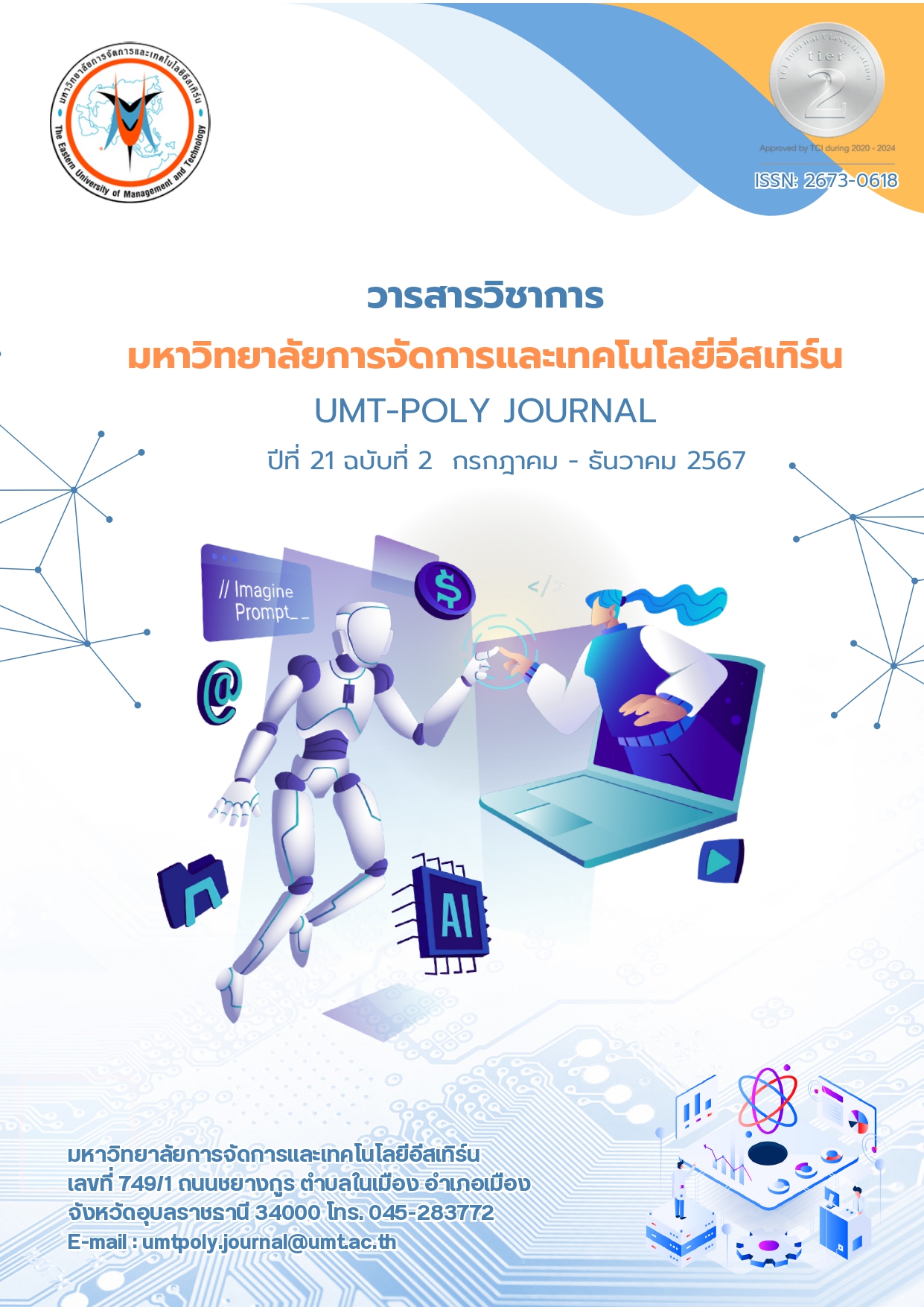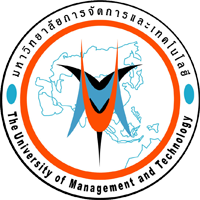Digital Skill of Educational Administrators in School Technology Support Management, Srisaket and Yasotorn Secondary Educational Service Area Office
Keywords:
Digital Skill of Educational Administrators, School Technology Support ManagementAbstract
Abstract
School technology support management, Srisaket and Yasotorn secondary educational service area office, is necessarily depended on educational administrators’ efficacy. Consequently, the researcher collected 238 respondents of the sample from administrators and teachers by using the questionnaires. The data was analyzed by Enter multi-regression. The findings indicated that there is only the components of digital skill of educational administrators in terms of computer and media literacy influenced and predicted significantly to technology support management at Beta = -.17, t = -2.22 (Sig .027), R2 =.04, Std. error = .33, F = 2.75 (Sig .027) and Durbin-Watson = .97 (<1.50). The findings confirmed that the development of computer and media literacy skill of the educational administrators is only one approach to improve school technology support management.
References
ประสพชัย พสุนนท์. (2557). ความเชื่อมั่นของแบบสอบถามในการวิจัยเชิงปริมาณ, วารสารปาริชาต มหาวิทยาลัยทักษิณ, 27(1), 144-163.
ภัตราภรณ์ ปัมคัมม์ และอภัย สบายใจ. (2565). ทักษะของผู้บริหารสถานศึกษาในศตวรรษที่ 21 กับการประยุกต์ใช้ e-learning ในการจัดการเรียนการสอนในสถานการณ์แพร่ระบาดของโรคติดต่อเชื้อไวรัสโคโรน่า 2019 ในโรงเรียนขยายโอกาสทางการศึกษา สำนักงานเขตพื้นที่การศึกษาประถมศึกษาศรีสะเกษ เขต 3, TAM 2022, 1220-1240.
สำนักงานเขตพื้นที่การศึกษามัธยมศึกษาอุบลราชธานีอํานาจเจริญ. (2567). รายงานผลการดำเนินงาน ประจําปี
งบประมาณ พ.ศ. 2566. สืบค้นจาก
https://drive.google.com/file/d/1OioSuSFd3KX0-J-u-TUOilUIf2foiEAJ/view
อารีรัตน์ มณีกรรณ์ และสมานจิต ภิรมย์รื่น. (2565). ความสัมพันธ์ระหว่างการพัฒนาครูและบุคลากรในโรงเรียนเอกชนกับความพร้อมจัดการศึกษาแบบออนไลน์ ในเขตจังหวัดอุบลราชธานี, TAM 2022, 1124-1135.
Arbaugh, J. B, & Benbunan-Fich, R. (2006). An investigation of epistemological and social
dimensions of teaching in online learning environments. Academy of Management Learning and Education, 5, 435-447.
Arbaugh, J. B., Godfrey, M. R., Johnson, M., Pollack, B. L., Niendorf, B., & Wresch, W. (2009). Research
in online and blended learning in the business disciplines: Key findings and possible future
directions. Internet and Higher Education, 12, 71-87.
Binkley, M. (2018). Defining 21st century skills, in P.E. Griffin, B. McGaw, E. Care (eds.), Assessment and Teaching of 21st Century Skills, 17-66.
Botero, G.G., Questier, F., Cincinnato, S., He, T., & Zhu, C. (2018). Acceptance and usage of mobile
assisted language learning by higher education students. J. Comput. High. Educ. 2018, 30,
–451.
Davis, F.D. (1986). A technology acceptance model for empirically testing new end-user information
systems: Theory and results. Doctoral thesis, Massachusetts Institute of Technology
Goodhue, D. L & Thompson, R. L (1995). Task-technology fit and individual performance. MIS
Quarterly, 19, 213-236.
Kadasala, N. R., Narayanan, B. & Liu, Y. (2016). International trade regulations on BPA: Global health and economic implications. Asian Development Policy Review, 4 (4), 134-142.
Mayer, R. E (2002). Multimedia learning. Psychology of Learning and Motivation, 41, 85–139.
Meier, C., Sachs, S., Stutz, C., & McSorley, V. (2017). Establishing a digital leadership barometer for small and medium enterprises (SME): 17-19 May 2017. Lublin: Management Challenges in a Network Economy; 2017.
Mumford, T., Campion, M., & Morgeson, F. (2007). The Leadership Skills Strataplex: Leadership
Skill Requirements across Organizational Levels. Leadership Quarterly, 18, 154-166.
Mustafa, N., & Zulhafizh. (2018). The use of technology to ensure the quality of teaching and learning: senior high-school teachers' perspective, Proceeding of the 2nd URICES, 2018 Pekanbaru, Indonesia, 765-771.
Piasecki, S. (2020). Gamification und digitalisierte Verwaltung. HMD. 2020, 57 (3): 399 412.
Reddy, P., Chaudhary, K., & Hussein, S. (2023). Research article A digital literacy model to narrow
the digital literacy skills gap. Contents lists available at ScienceDirect Hellion. Helion 9
(2023) e14878.
Rieder, A. (2014). Führungsstile-Reflexion und Erörterung wesentlicher Führungstheorien.
Perspektive Bibliothek. 2014: 144-64. https://doi.org/10.11 588 / pb.2014.2.16810.
Sun, P.C, Tsai, R. J, Finger, G. Chen, Y-Y., & Yeh, D. (2008). What drives a successful e-learning? An
empirical investigation of the critical factors influencing learner satisfaction. Computers
and Education, 50, 1183-1202.
Webster, J, & Hackley, P. (1997). Teaching effectiveness in technology-mediated distance learning.
Academy of Management Journal, 40, 1282-1309.
Wu, W., & Hwang, L.-Y. (2010). The effectiveness of e-learning for blended courses in colleges: A
multi-level empirical study. International Journal of Electronic Business Management, 8(4),
-322.
Zhang, Y., Wen, J., Qiuli, Q.I.N., Hao, Y.U. , Leminen, S., & Rajahonka, M., (2015). How smart,
connected products are transforming companies. Blog.Prossess.Com, 4 (4), 5-14.



